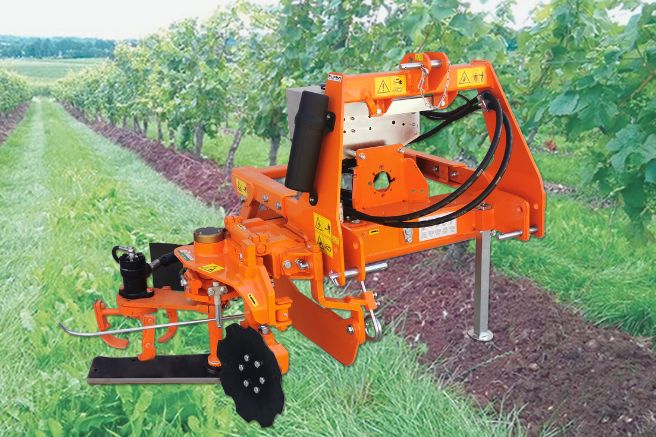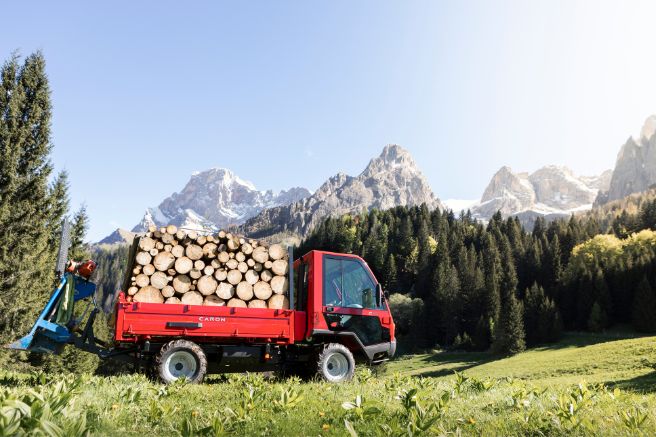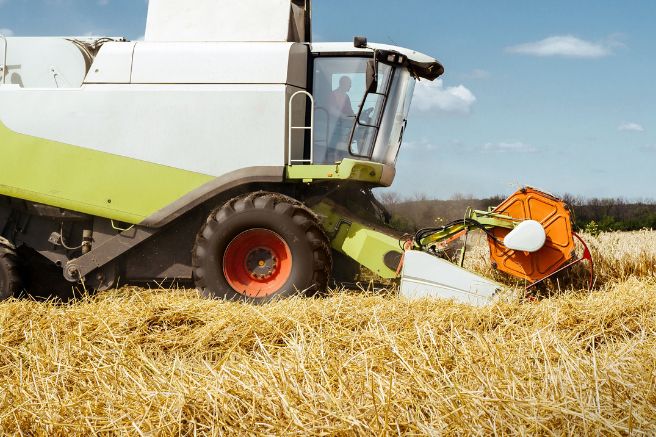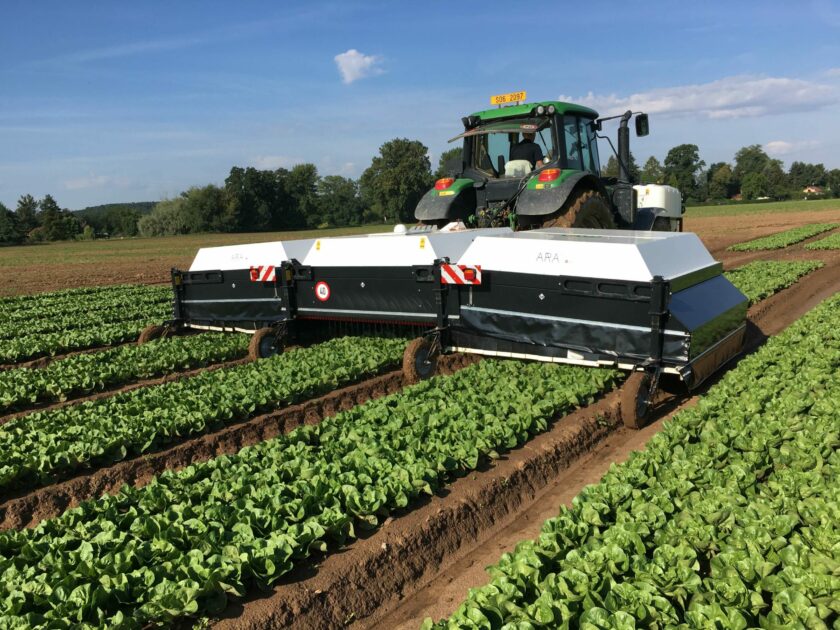
Among the most stringent limitations on agrochemicals are the so-called “buffer zones,” which are the minimum distances that must be respected during field application with regard to watercourses, roads, or nearby residences. This distance ranges from five to thirty meters depending on the product being distributed, thereby reducing important areas available for treatment, including herbicides.
However, technology can intervene to make these limitations unnecessary by applying phytosanitary products only where needed and without generating drifts that could reach sensitive areas.
Ecorobotix “Ara” Bar from the Swiss Company
In this regard, Ecorobotix, a Swiss company, has developed “Ara,” a special spray bar model that combines two significant advantages. First, it can identify the plants beneath it through cameras that distinguish green and brown colors, which are typical of plants and bare soil, respectively. Thanks to specific software, only the nozzles corresponding to the area to be sprayed are activated.
The precision of the treatment is ensured by the presence of 156 nozzles spaced only four centimeters apart, allowing for localized spraying on very small areas. The second peculiarity of “Ara” is related to the drift usually generated during ground treatment. This is minimized both by the very low working height of the bar relative to the ground, adjustable between 15 and 50 centimeters, and by the external structures protecting the bar itself. This allows it to operate in complete isolation from potential air currents, directing 100% of the phytosanitary mixture to the target. This results in a tangible advantage in terms of effectiveness and environmental respect, with the only drawback being low productivity per hectare when “Ara” is compared to large-scale spraying bars.
The operational front of the Swiss proposal is indeed only six meters wide, with a top speed of seven kilometers per hour. Essentially, the maximum daily treatable area, claimed by the company to be 96 hectares, appears quite utopian. With a width of six meters and a speed of seven kilometers per hour, only a little more than four hectares can be treated per hour. Therefore, covering 96 hectares would take almost 23 hours. This calculation does not take into account the time needed for turning and refilling the 600-liter front tank, which, even at a plausible volume of 200 liters per hectare for herbicides, allows for the treatment of only three hectares before needing to refill the phytosanitary mixture.
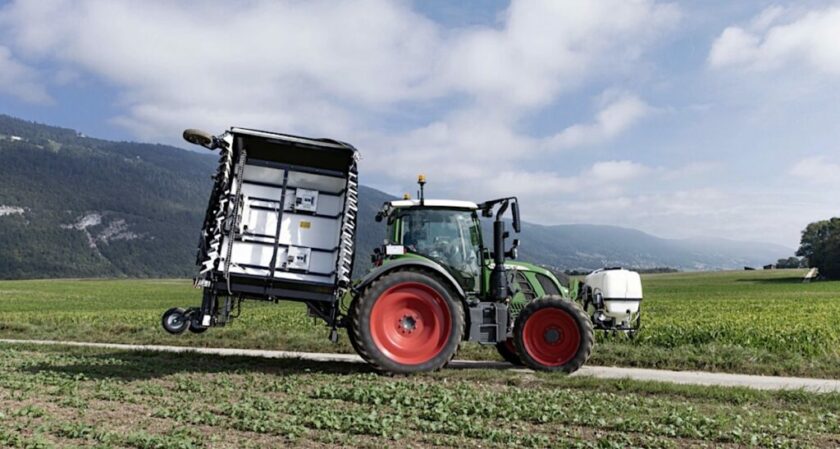
More realistically, “Ara” can compete excellently only with mechanical weeding practices using hoes, but it has the added advantage of being able to apply fungicides, insecticides, and liquid fertilizers. In such cases, the benefits of “Ara” become tangible, as products reach the crops in a precise, thorough, and homogeneous manner, maximizing their effectiveness without wasting a drop of aerosol.
Finally, for road transport, the bar and its containing structure are designed with three modules, two of which are external and fold upwards, allowing the equipment to easily stay within three meters. It is hoped that solutions like “Ara” will be considered in Brussels to render the buffer zones indicated on phytosanitary product labels unnecessary, thereby protecting every square meter of fields more effectively.
Title: Ecorobotix “Ara” Bar, Zero Agrochemical Drift
Translation with ChatGPT





